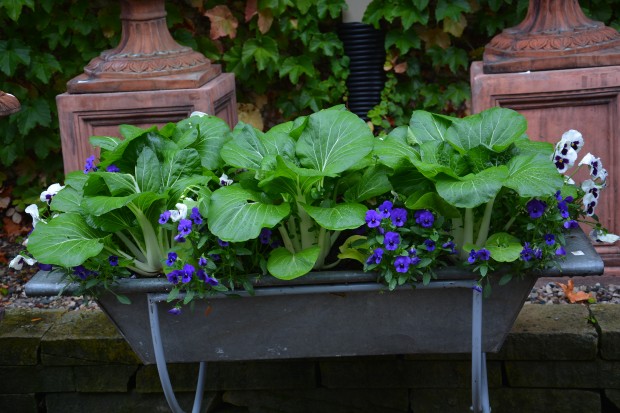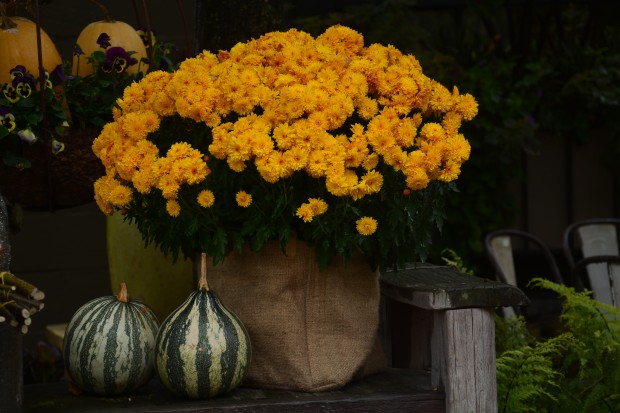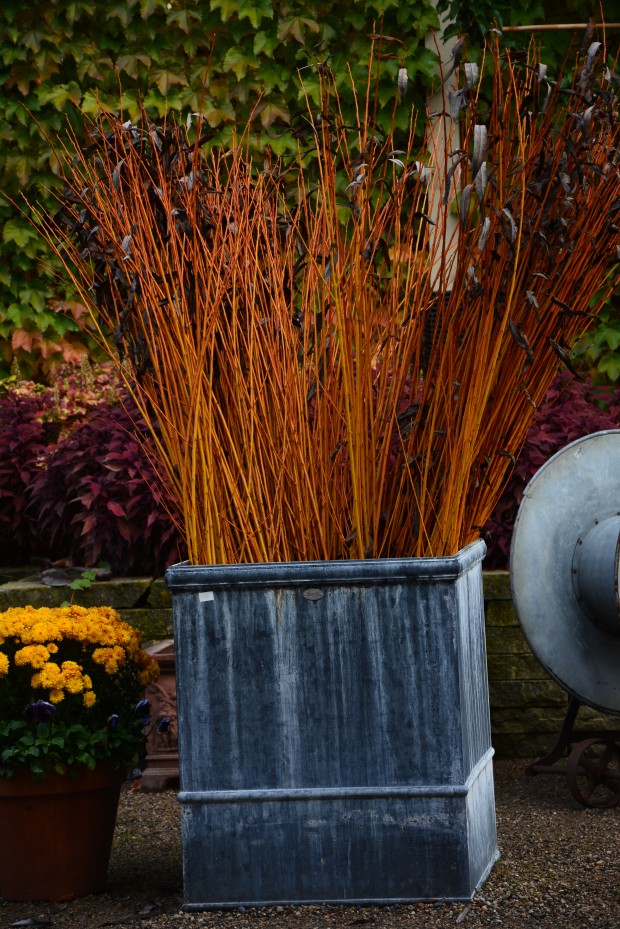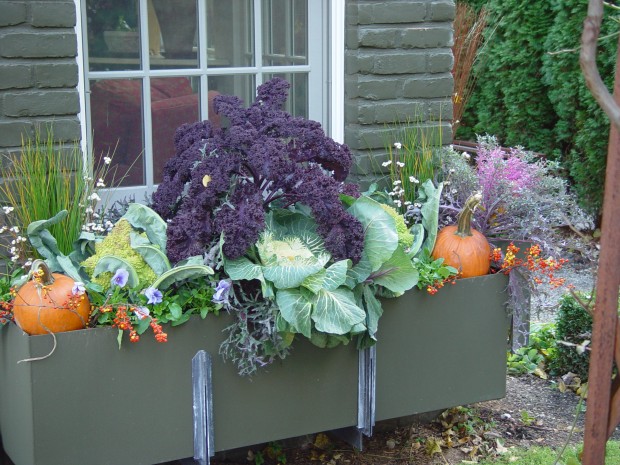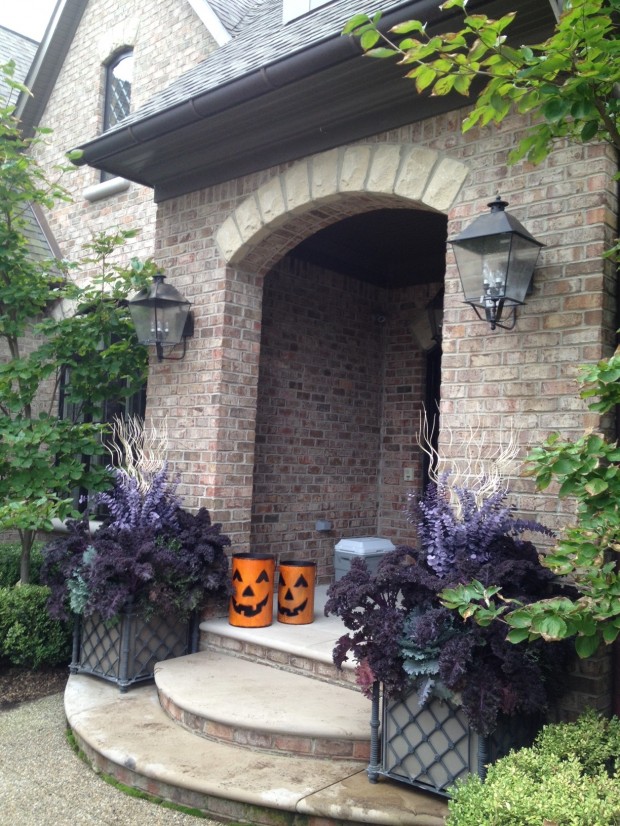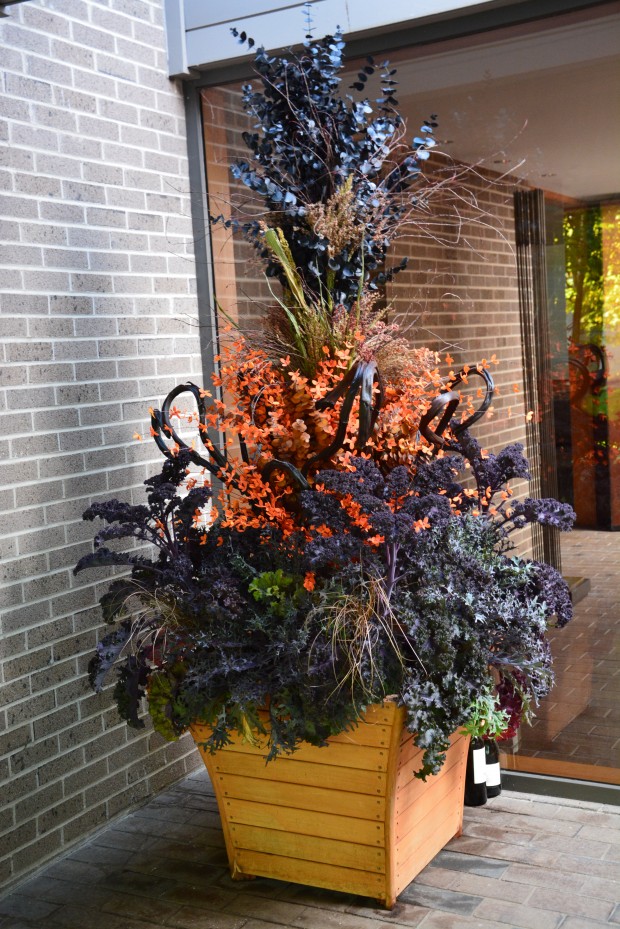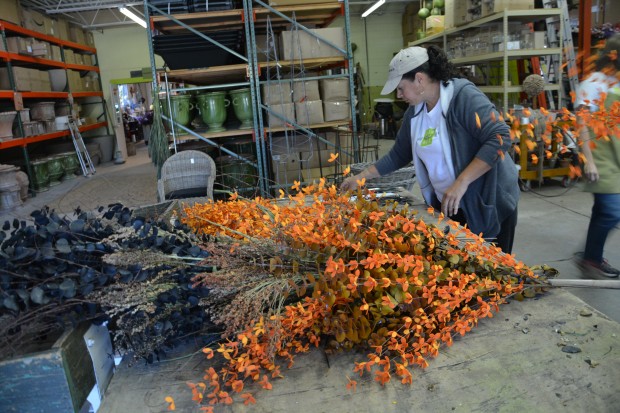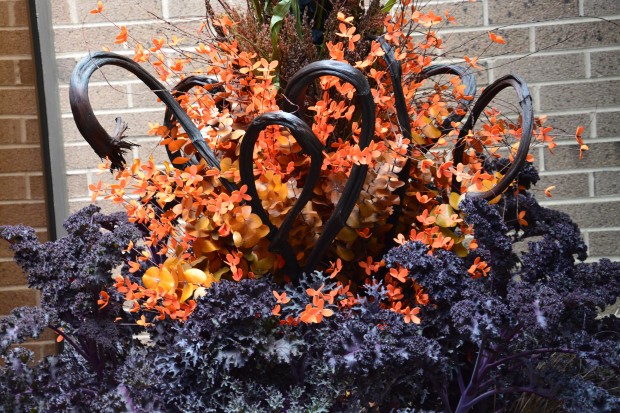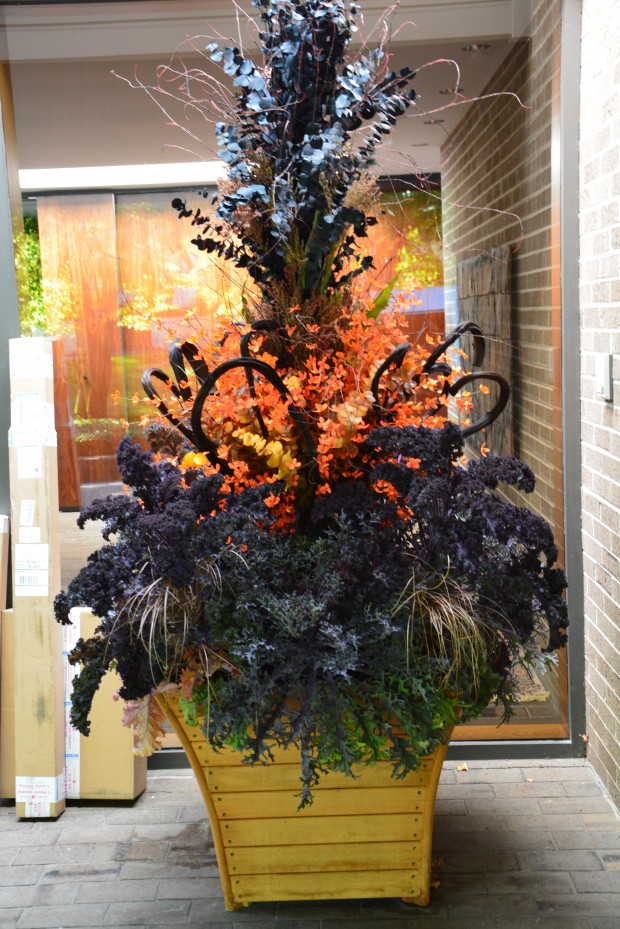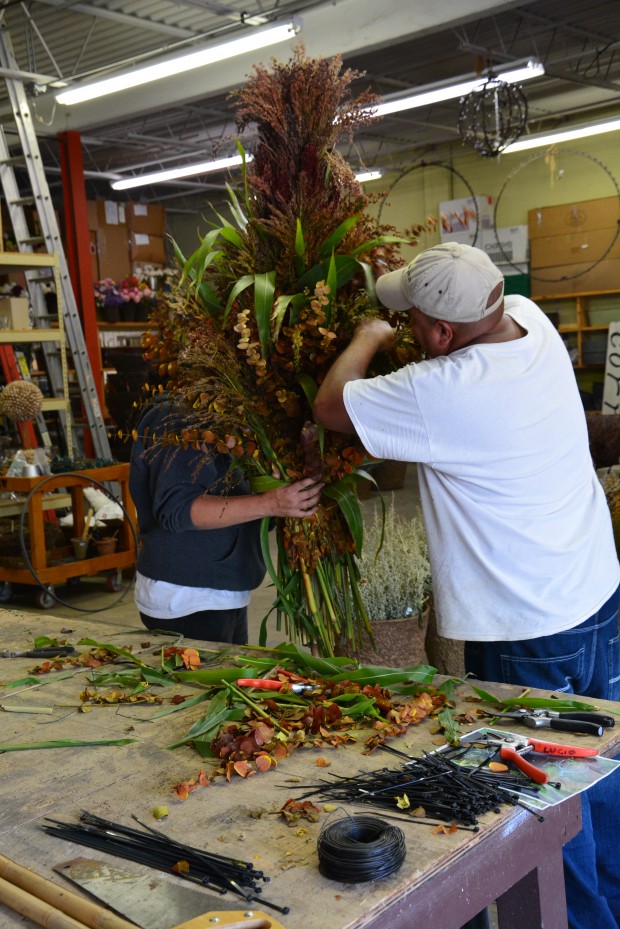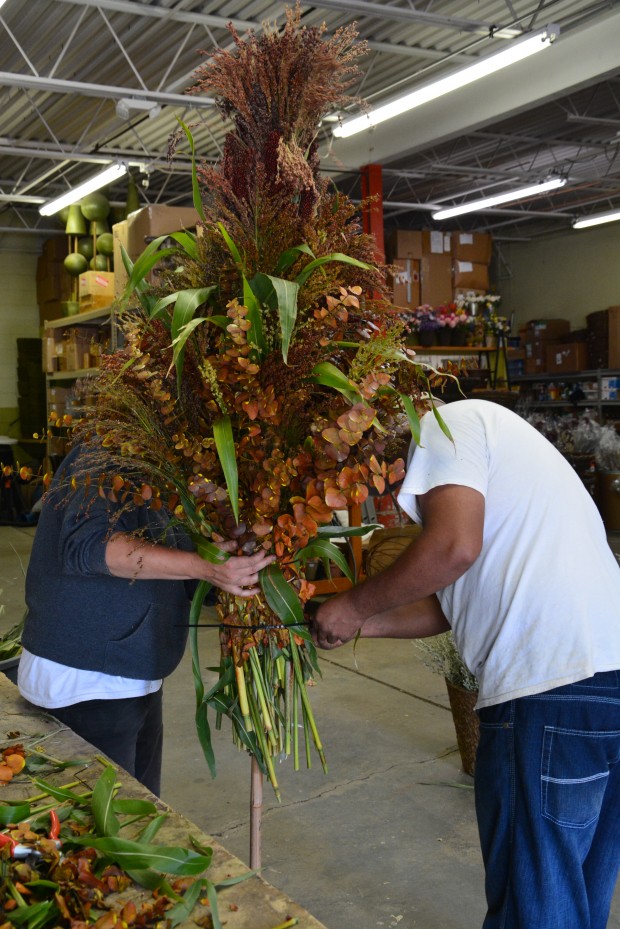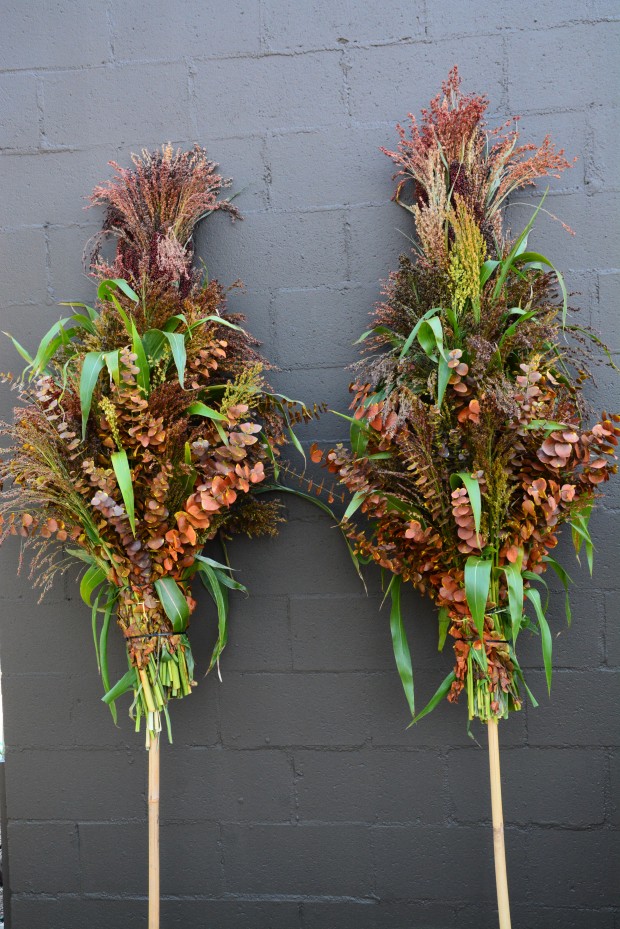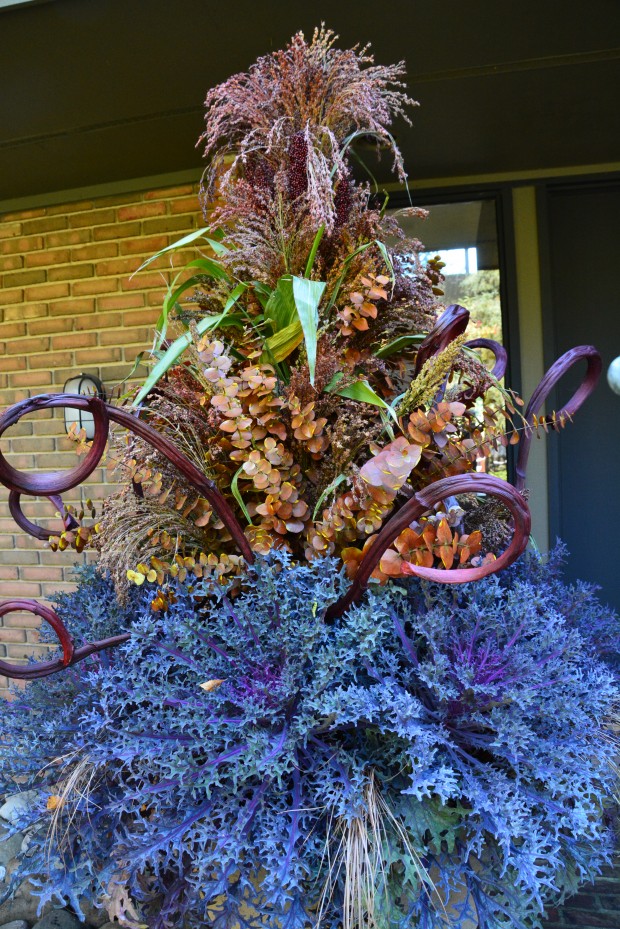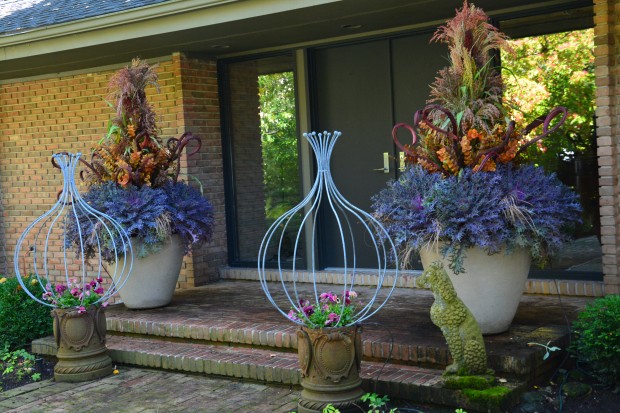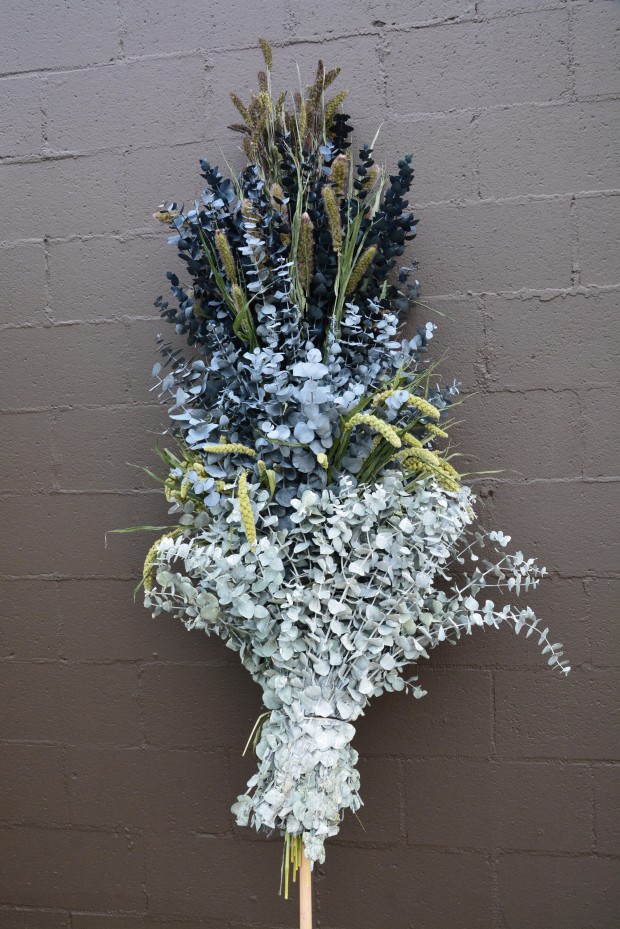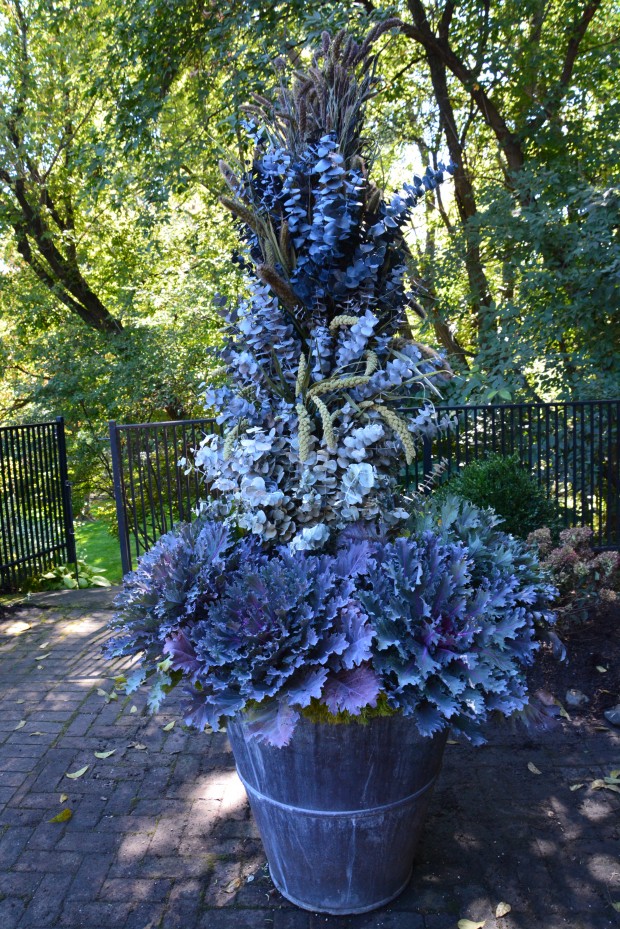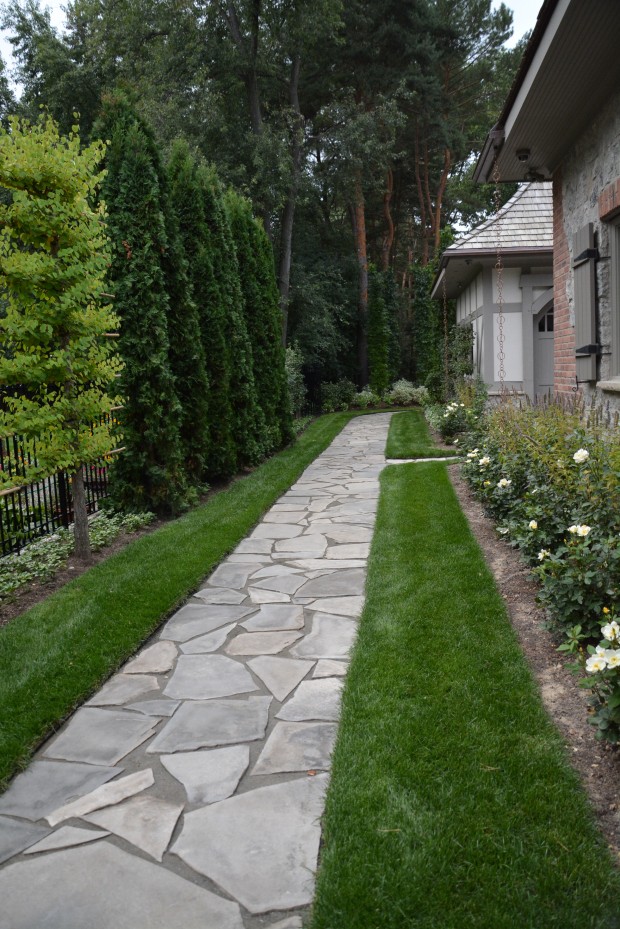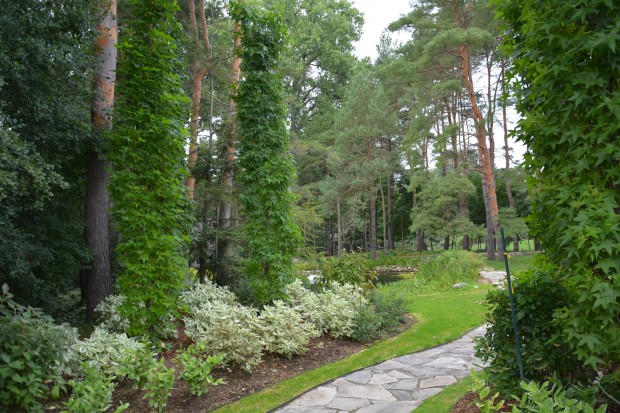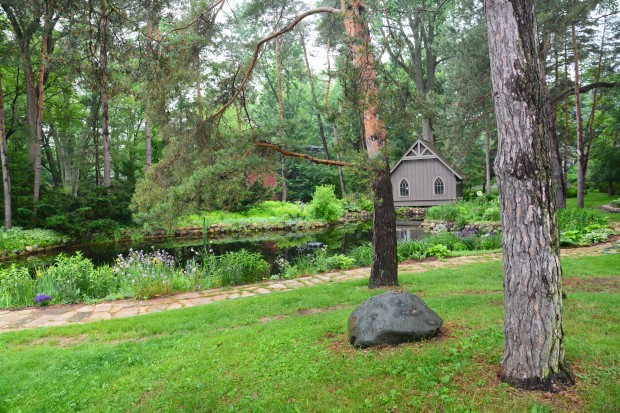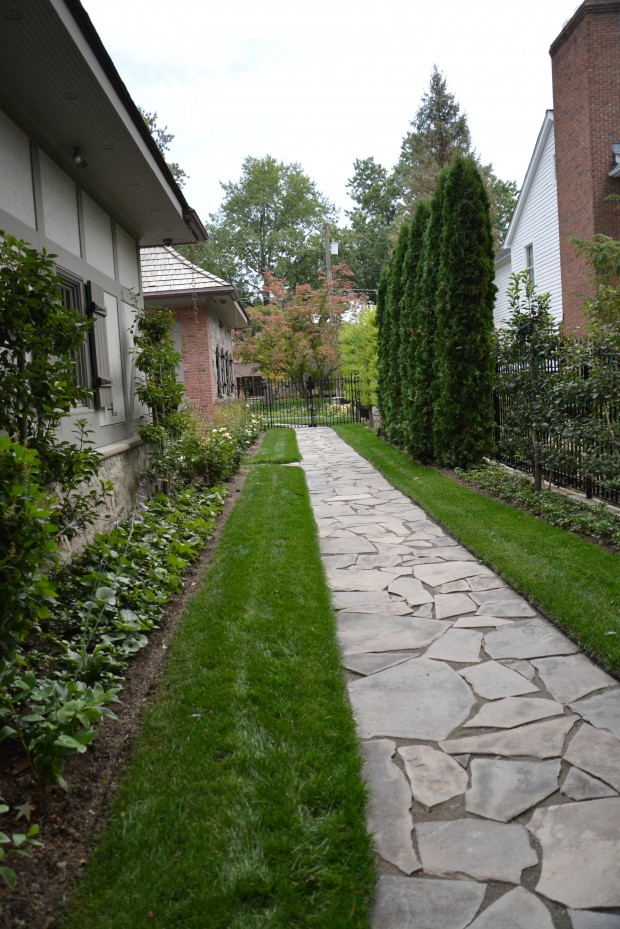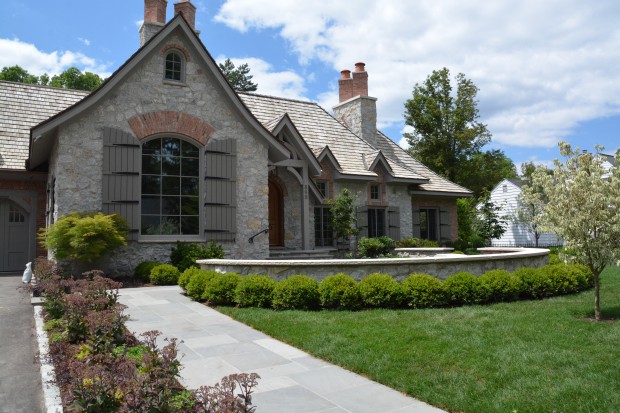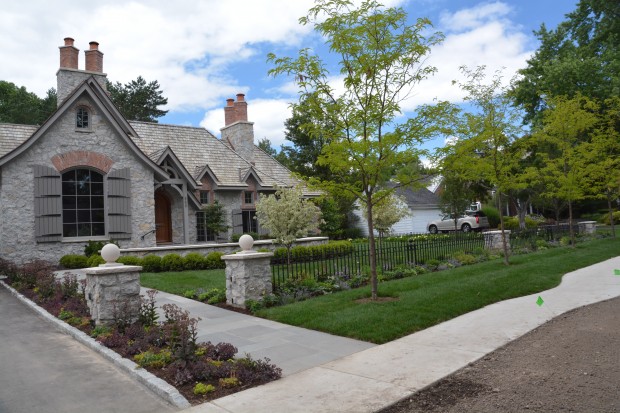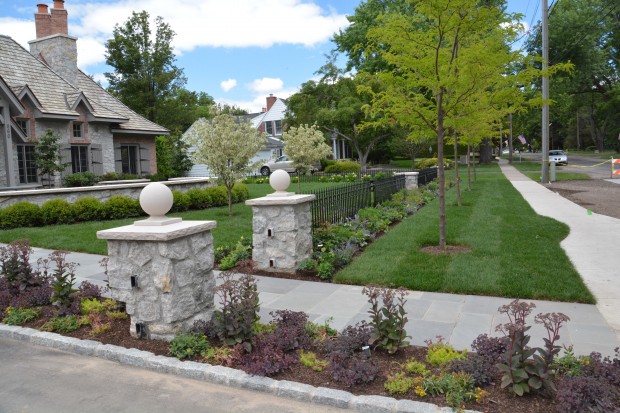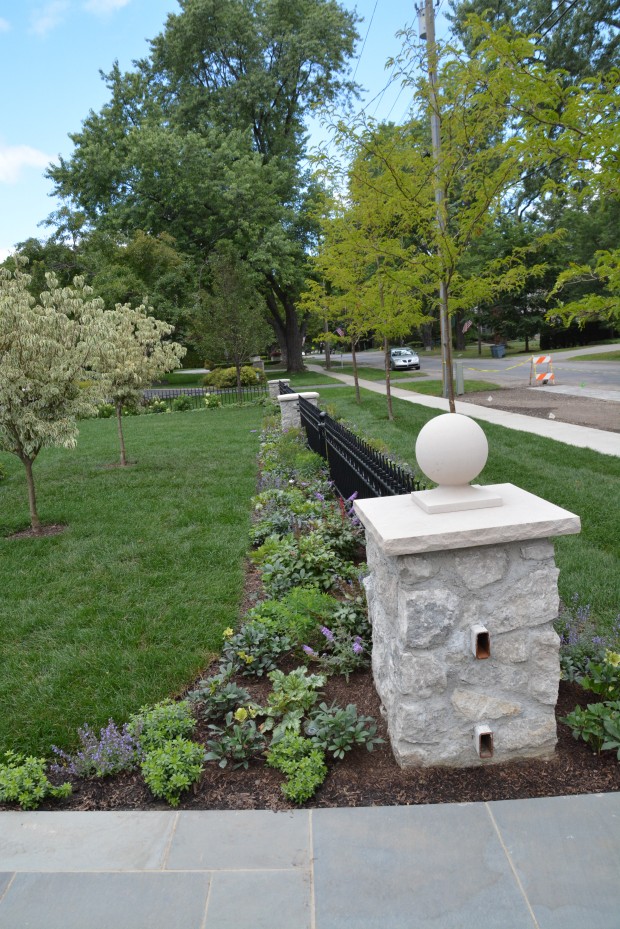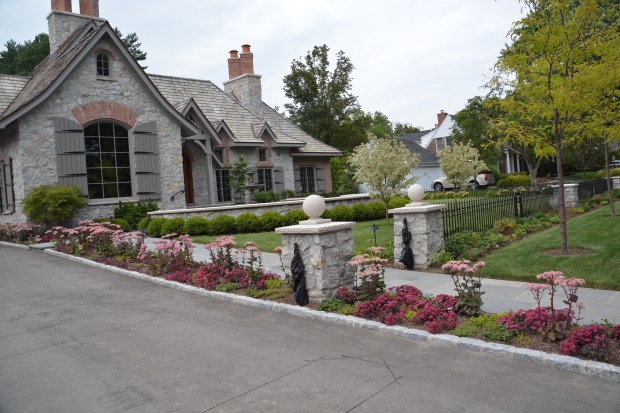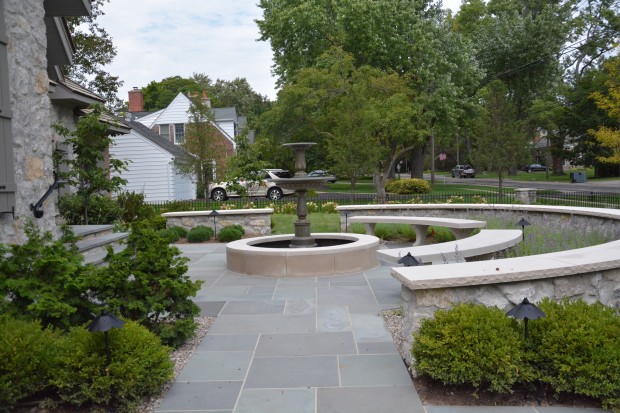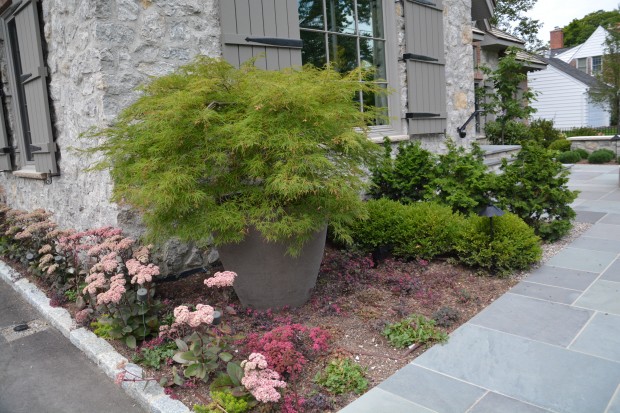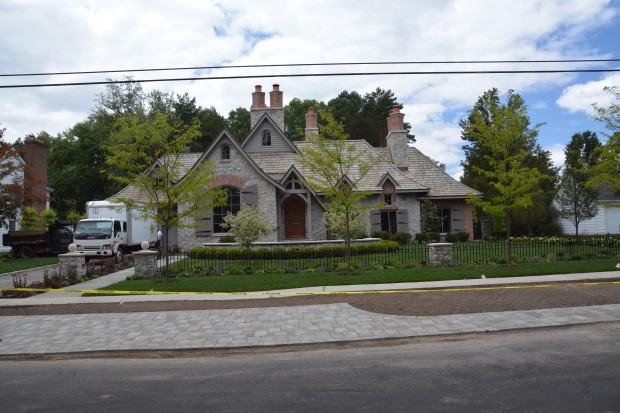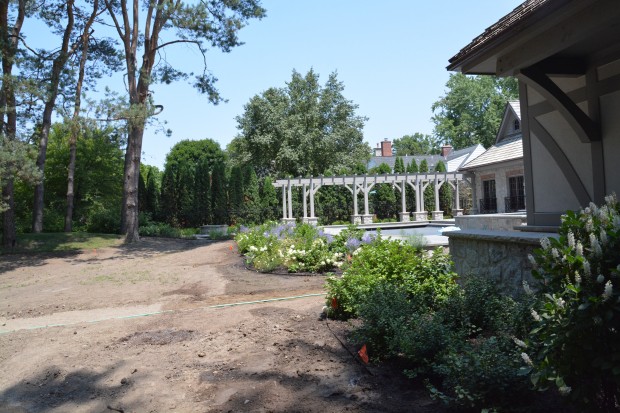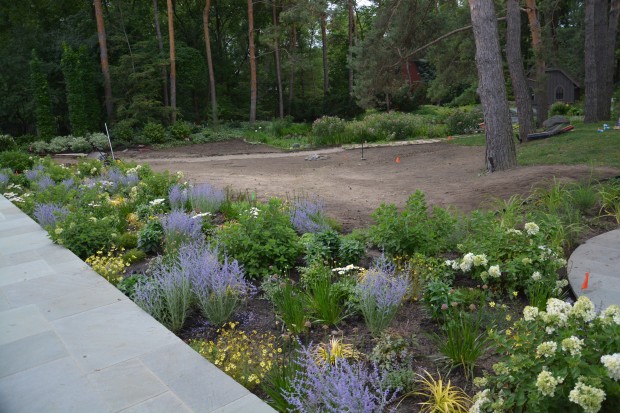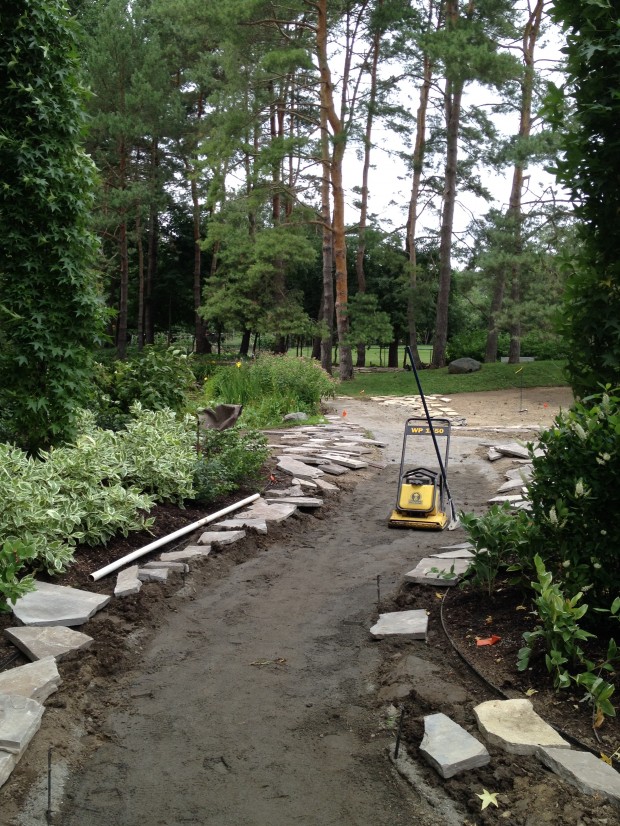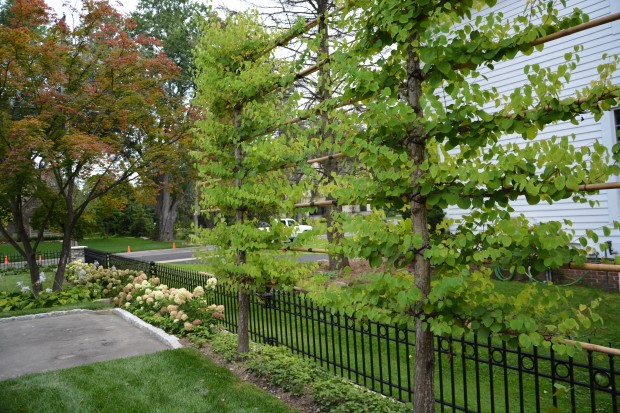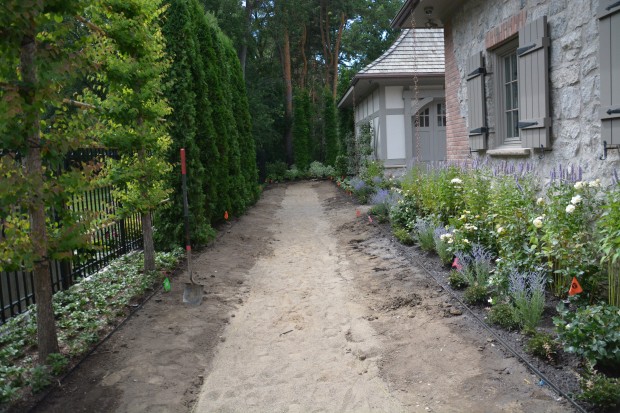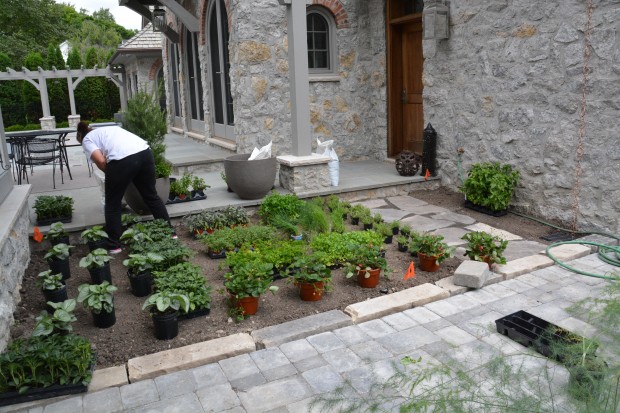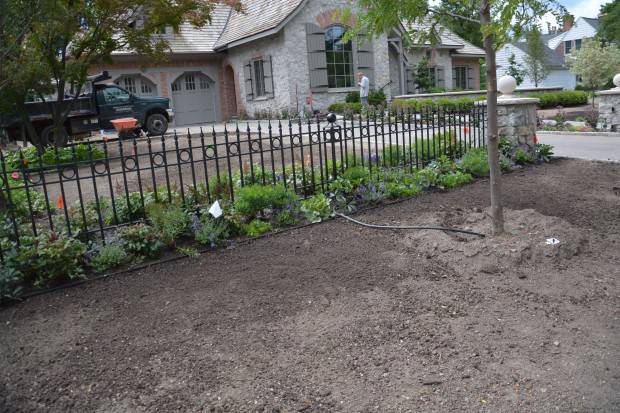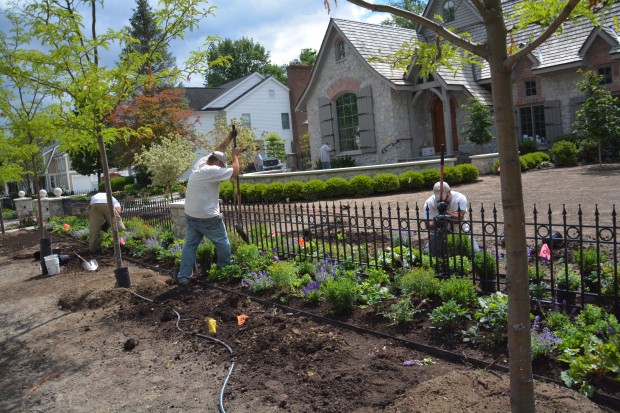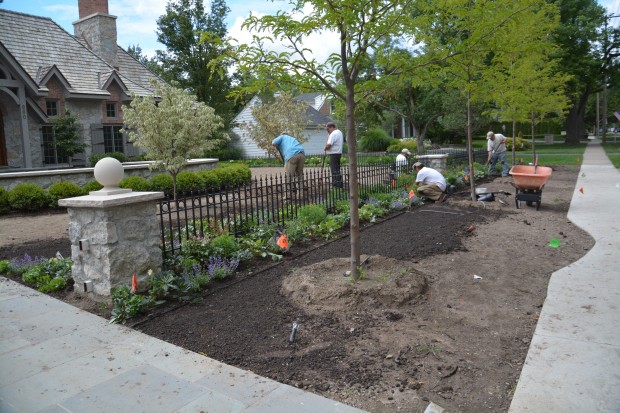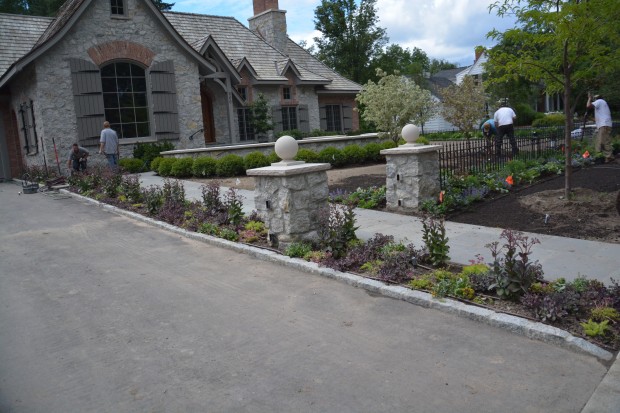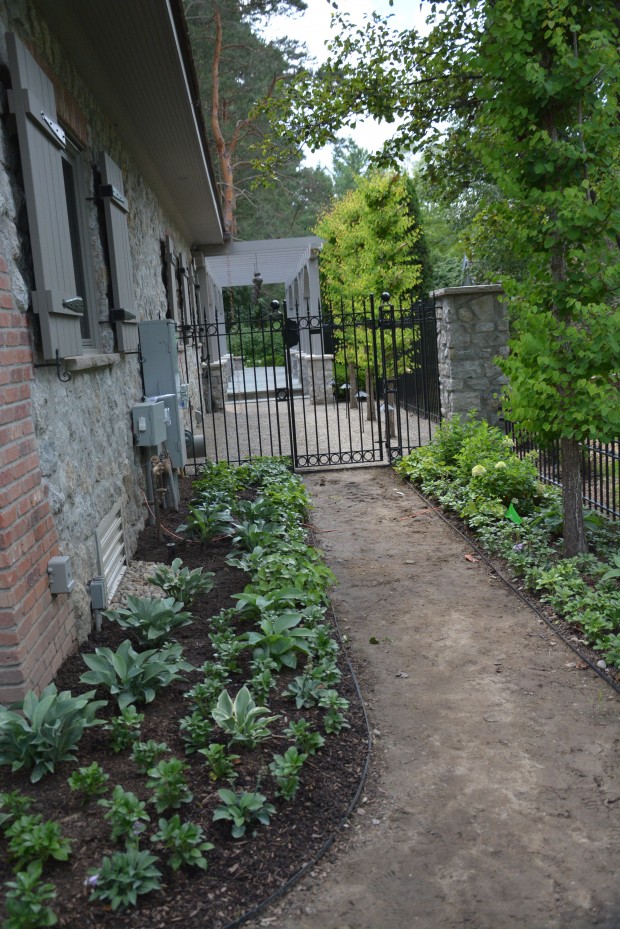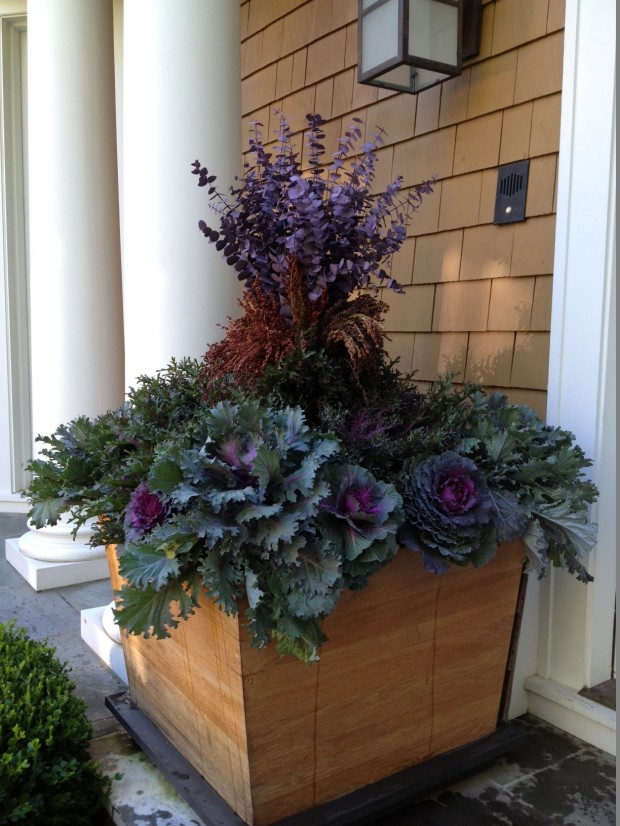 eucalyptus, broom corn, cabbage, and kale
eucalyptus, broom corn, cabbage, and kale
 bleached sticks, eucalyptus, green and white pumpkins and gourds
bleached sticks, eucalyptus, green and white pumpkins and gourds
 white pumpkin with white cabbage in a bushel basket
white pumpkin with white cabbage in a bushel basket
 striped pumpkins and squash on grapevine
striped pumpkins and squash on grapevine
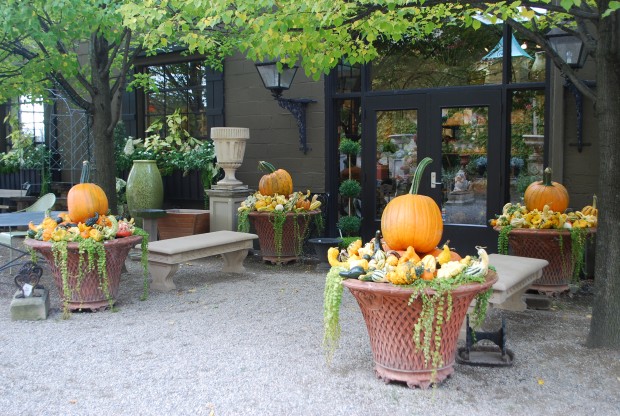 fall pots with big pumpkins and gourds
fall pots with big pumpkins and gourds
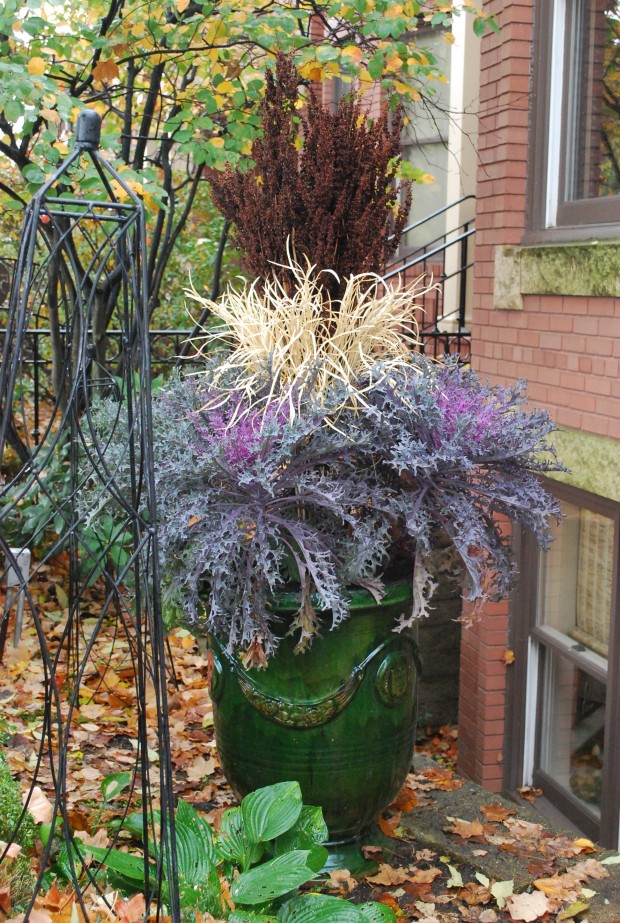 burdock seed heads, bleached plastic grass and peacock kale
burdock seed heads, bleached plastic grass and peacock kale
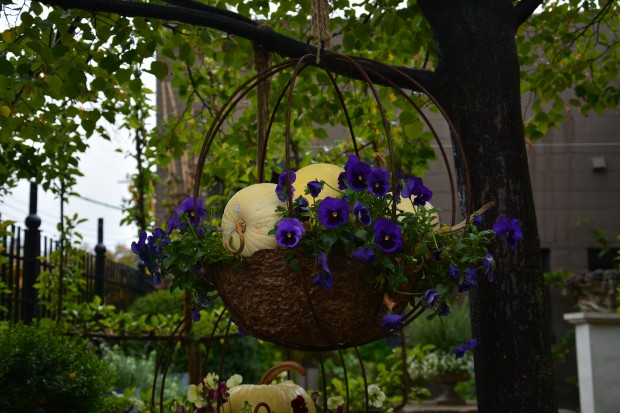 Rob’s grow-sphere with yellow pumpkins and pansies
Rob’s grow-sphere with yellow pumpkins and pansies
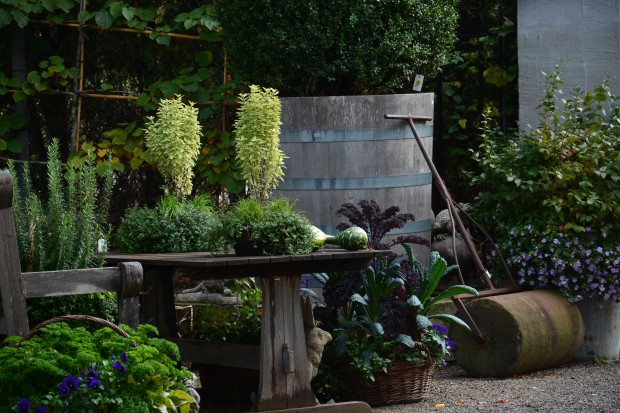 pair of fall pots with variegated basil
pair of fall pots with variegated basil
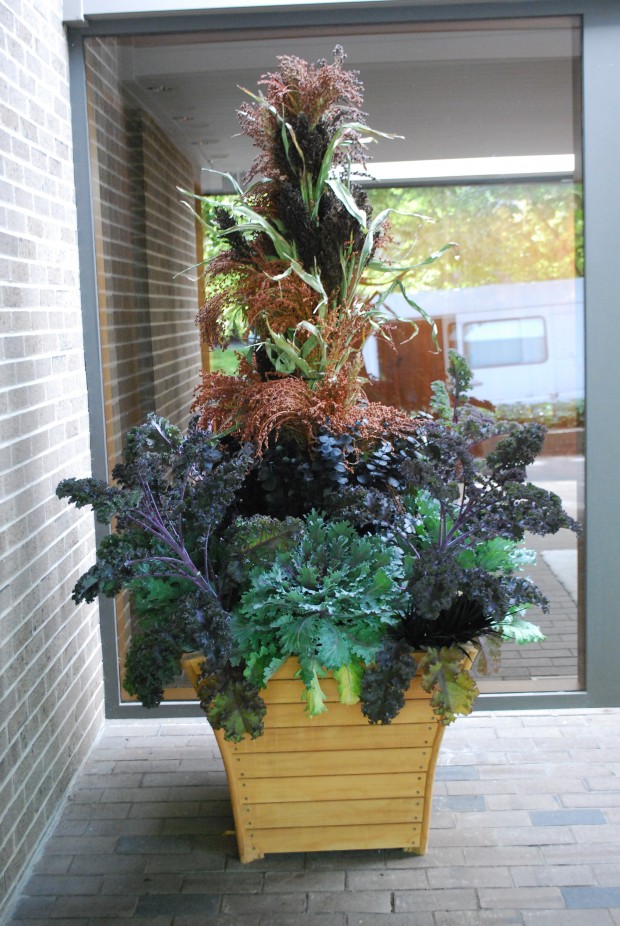 fall container with broom corn, black eucalyptus, and ornamental kale
fall container with broom corn, black eucalyptus, and ornamental kale
 The fall season provides an embarrassment of riches in materials great for fall containers. In a pinch, faux materials can provide just what a container needs in form or color. That material may be fake, but I am a real person putting the whole thing together. As for you-plant for fall in a way that expresses your take on the season. I try to exercise a little good sense. If I put the stems of weeds in containers, I try to put every last seed in the trash, first. Dry thistle stems are gorgeous in fall pots, but those seeds will spread a terrible weed that is tough to eradicate. That said, I use the intact seed pods of butterfly weed everywhere I can, in hopes it will seed with abandon. If weed seeds must be part of the display, I will encase them on the stem with floral sealer. I wait until the weather gets good and cool to pile pumpkins and gourds in pots. Set in place too early in the fall, they will rot. Outside of that, I’ll stuff pots with anything that looks good. It makes no sense to exercise restraint at the time of the harvest, does it?
The fall season provides an embarrassment of riches in materials great for fall containers. In a pinch, faux materials can provide just what a container needs in form or color. That material may be fake, but I am a real person putting the whole thing together. As for you-plant for fall in a way that expresses your take on the season. I try to exercise a little good sense. If I put the stems of weeds in containers, I try to put every last seed in the trash, first. Dry thistle stems are gorgeous in fall pots, but those seeds will spread a terrible weed that is tough to eradicate. That said, I use the intact seed pods of butterfly weed everywhere I can, in hopes it will seed with abandon. If weed seeds must be part of the display, I will encase them on the stem with floral sealer. I wait until the weather gets good and cool to pile pumpkins and gourds in pots. Set in place too early in the fall, they will rot. Outside of that, I’ll stuff pots with anything that looks good. It makes no sense to exercise restraint at the time of the harvest, does it?
